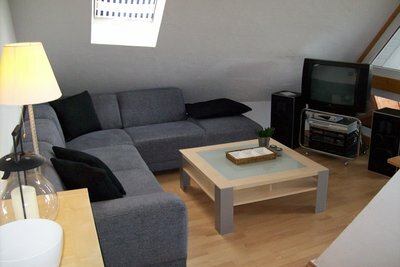Lay PVC planks without air bubbles
PVC boards are an inexpensive alternative to wooden floors. Not only are they more hard-wearing and easier to care for than other floors, laying is also simple and straightforward. Since this does not produce the typical do-it-yourself noises, you can even lay your PVC floor at night.

What you need:
- Notched spatula
- PVC planks
- pencil
- Craft knife
- Filler
- suitable PVC adhesive
- Laying plan
- Rub cork
- Link roller
- spatula
Lay self-adhesive PVC planks
- First, remove your old one Flooring residue-free. Your floor must be clean, dry and, above all, level. You need to lay a moisture barrier for screeds that are close to the ground or floating. You need to level non-absorbent substrates to a thickness of two millimeters. Is yours Underground very uneven, first apply a leveling compound.
- Place the PVC-Leave the floorboards in the room in which they are to be laid for at least two days so that they can acclimatise. The floor temperature should not exceed or fall below 15 degrees. The air temperature should be around 18 degrees.
- Before you start laying, make a laying plan, on the one hand to achieve a good laying result and on the other hand to have little loss of material. In addition, you should draw a reference line vertically and horizontally or draw a tension cord in order to be able to work straight.
- Peel off the protective film from the back and start with the first plank. You lay the next boards butt-jointed.
- If you need to make corrections, lift the PVC planks off again with a spatula.
- If you have to cut the boards to size, it is sufficient to scratch the top lightly with a craft knife, after which it can be easily broken through.
Laying upright lamellar parquet - this is how it works
Vertical lamellar parquet, also known as industrial parquet, is one of the ...
Glue plastic floors over the entire surface
- If you use PVC planks that have to be glued, first mix the glue according to the instructions. When buying, let us advise you which adhesive is recommended for your boards. In large rooms, you should mix the glue step by step, only as much as you can use.
- Apply the adhesive to the surface with the notched trowel and let it flash off a little, you can find the exact time in the instructions for use of the adhesive.
- Now insert the plank into the still damp glue. Press the planks into place with a rub-off cork or a roller. However, do not press the individual planks together, just lay them tightly next to each other. No tension should build up.
- Once you have glued all of the PVC planks, go over the entire floor with a roller.
- Let the glue set completely. Only after the end of the drying time may they fully load and use the floor.
How helpful do you find this article?

